Part 1: A look at IndyCar’s revolving door of CEOs
 |
| Front: Pat Patrick and Team Rahal's Scott Roembke Center: Chris Pook, Tom Anderson and Carl Haas Back: Gerald Forsythe, Derrick Walker and Cosworth's Ian Bisco |
| Mark Cipolloni/AR1.com |
One was a former Playboy executive. One blew threw $83 million in a year. Two were labor attorneys. Two were previous sports marketing executives. Two others had previously been in charge of the SCCA. Three had previously owned Indy car teams. Three weeks ago, Randy Bernard added former bull riding executive to this list. And with Bernard's firing/forced resignation/whatever, Jeff Belskus, both Bernard's predecessor and successor, became the only man to serve multiple tenures.
And whether they were called CEO, Chairman, President, or executive vice-president; whether they led CART, Champ Car, the IRL, the FedEx Championship Series IndyCar, IndyCar LLC, INDYCAR, the PPG Indy Car World Series, or multiple of the preceding, all with one very notable exception, were accomplished, prior to assuming a leadership role within the sport. Further, many have been quite successful after their tenures ended.
However, none of the 15 men, who have held prominent leadership posts in Indy car racing in its numerous sanctioning acronyms, since CART and USAC split in 1979, have been able to successfully unite the various constituents within the sport in a positive, productive manner. While Bernard, the first Indy car executive of the social media era, will be more fondly remembered than most, he has sadly found himself on the cluttered ash heap of Indy car executives who failed to successfully lead the sport.
Here, in a two-installment piece, we will take a look at the men who have led Indy car racing over the past three decades. We will evaluate their successes and failures, taking into account the situations they found themselves in, and the initiatives they enacted. Enjoy.
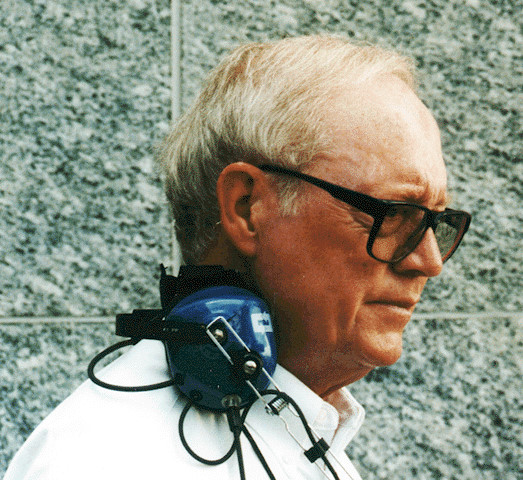 |
| Pat Patrick |
U.E. “Pat" Patrick (President of CART 1978-1979)
Background: In the 1960s, the Michigan native famously quit his accounting job to drill for oil. Reportedly, on his 18th attempt, Patrick struck gold, black gold that is, in the fields of Michigan. He would later parlay his riches, into forming a successful race team in USAC Championship racing, and Indy car racing.
Patrick, along with Roger Penske, would cofound Championship Auto racing Teams, as a group intended to represent the interests of team owners in their dealings with USAC.
As the relationship between CART and USAC deteriorated, Patrick became the front man for CART. Late in 1979, Patrick became CART’s chairman of the board, surrendering the role of President to Jim Melvin. Patrick, of course, continued as a successful Indy car owner, winning the Indianapolis 500 in 1982 and 1989, and the CART championship in 1989.
Patrick's legacy is? He was the public face of CART in its struggles with USAC. After helping CART get off the ground, Patrick returned returning to manage his successful race team.
What is Patrick doing now? The old wildcatter is currently is exploring an initiative to introduce natural gas into motor racing.
Jim Melvin (President of CART, 1979-1980)
Background: Melvin had served as President of Michigan International Speedway during Roger Penske’s ownership of the track in the 1970s. Melvin served as CART’s executive director and general manger in 1978 and 1979. Melvin became CART President in late 1979.
And the former SCCA administrator was essential in helping the young organization in establishing some of the goals outlined in Dan Gurney’s White Paper, particularly Melvin negotiating a four-race deal with NBC, and secured PPG as title sponsor.
Melvin's Legacy: The likable Melvin essentially ran the business of CART, while Patrick was the spokesperson for the owners. Melvin must be credited with securing a network television deal with NBC and the PPG title sponsorship, which, of course, brought the legendary Jim Chapman to the young organization.
What is Melvin doing now? Melvin served as head of the Milwaukee Mile for a time during the 1990s and 2000s.
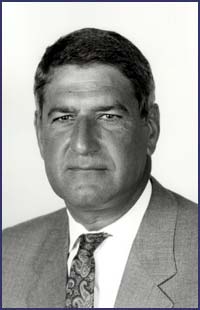 |
| John Frasco |
John Frasco (Chairman of the Board and CEO of CART, 1980-1988)
Background: Frasco was a labor attorney who founded his own Michigan based firm in 1974. He successfully worked for Penske and Patrick in arguing CART’s case during its battle with USAC in 1979. Frasco, later became Chairman of CART in 1980, after a brief peace with USAC deteriorated into conflict again.
While the 6'6" Frasco was accused of being aloof, cold, and unconcerned with the plight of small owners, CART did experience an era of significant growth during his tenure. The series greatly expanded its television reach and added urban markets with street races in Long Beach, Toronto, Vancouver, and the Meadowlands.
Frasco also must be credited with establishing the CPI (CART Properties, Inc.), which helped raise the value of the then young series. While CPI was somewhat complex, essentially awarded payouts to teams who contested the full CART championship, something Dale Coyne referred to as his team's "lifeblood."
Of course, many decried the series away from traditional venues in lieu of more street circuits, particularly the Mickey Mouse layout at the Frasco-promoted Meadowlands Grand Prix, and the franchise system CPI established. Further, the emergence of engine leases further widened the gap between the haves and have-nots.
By 1988, many in the paddock were tired of the unfriendly Frasco’s lack of racing acumen. Further, it became known that the CEO enjoyed a rather cushy deal with CART, and was able to profit personally as a race promoter, in addition to his role as Chairman.
Frasco would be voted out as Chairman in 1989, and the owners paid him $1 million annually for the next three years to not work.
Frasco's legacy is? Unappreciated.
Bobby Unser once said about Frasco, "he probably has done more for motor racing than any man in history." While Uncle Bobby may have been exaggerating somewhat, his sentiment is telling.
Remember, the initial goals of CART were to grow a viable series separate from the Indianapolis 500, something they believed USAC was failing miserably at. While Frasco was not particularly popular, and certainly a racing novice, no one can dispute he helped the breakaway organization establish itself as a viable entity apart from the Speedway. CART’ television revenues and market reach increased significantly during Frasco’s reign, as the organization was greatly professionalized under his watch.
While no one exactly remembers the aloof labor attorney with warm, fuzzy feelings, his business acumen was unquestioned. And let's face it: We'd take a John Frasco right now.
Where is Frasco now? Frasco is currently a partner with Frasco, Caponigro, Wineman and Scheible in Bloomfield Hills, Michigan
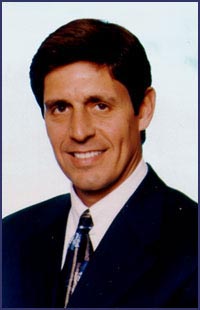 |
| John Caponigro |
John Caponigro (CART President, 1988-1989)
Background: Caponigro, like Frasco came to CART with a background in labor law. Hired by Frasco as a staff attorney at CART in 1982, Caponigro saw his role within the young organization increase quickly. He would become Frasco’s right-hand man, and ultimately President of the organization in 1988, and took over for his former boss, when he was ousted in 1989. However, his tenure did not last long.
Reportedly, during his first Board meeting, Caponigro declared his intention to up the ante with longtime series sponsor PPG. Apparently, Caponigro wanted a consumer brand title sponsor, and believed PPG should allocate more funds to prize money. And those who remembered PPG’s support of the series, particularly the work of the late great Jim Chapman, in the series early days, were none too impressed.
Nevertheless, in late 1989, Caponigro was offered a one-year extension, which he reportedly rolled his eyes and uttered something to the effect of “I’ll think about it." Unimpressed with Caponigro’s dismissive tone, the CART board decided to look elsewhere for leadership.
Caponigro's legacy is? Largely linked to Frasco's. While his tenure as the leader of the organization was incredibly short, many of the initiatives credited to Frasco, were done with the assistance of a young Caponigro.
What is Caponigro doing now? Caponigro is currently a law partner of Frasco's, and is president of Sports Management Network, a representation company that counts IndyCar drivers such as Marco Andretti and Graham Rahal amongst its clients.
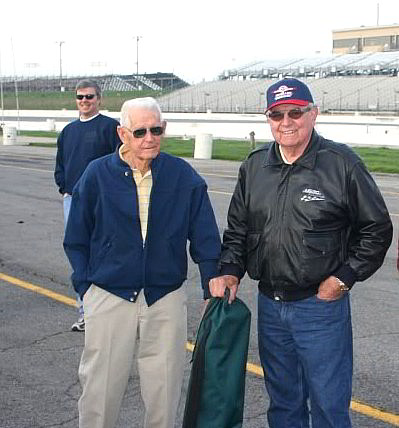 |
| John Capels |
John Capels (CART executive vice president, and chief operating officer, 1989-1990)
Background: Capels was a longtime successful Indy car mechanic, and briefly a team owner. In late 1989, he would lose his Alfa Romeo engine deal to Patrick ironically. This coincided with CART needing to fill a leadership void.
Suddenly available, Capels took over after the sacking of Caponigro and Frasco, reportedly on the recommendation of Barbara Trueman. Capels, of course, was exactly what Frasco and Caponigro were not: a racing guy. He became CART's executive vice president and chief operating officer, and led the organization briefly before the arrival of Bill Stokkan in July of 1990.
Capels' legacy is? Non-descript.
Capels basically ran the company while they searched for a new leader. However, somewhere along the way, Capels and CART had a falling out, as the former mechanic later joined forces with Tony George and IMS, in the early years of the Indy Racing League.
What is he doing now? Capels became the Chairman of the Board of Directors for USAC in 2002, before retiring in 2010.
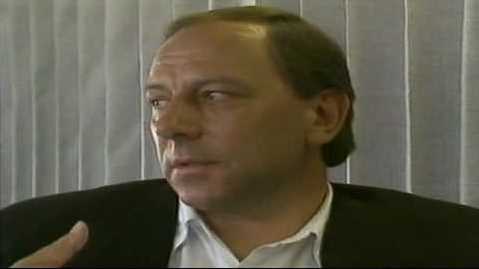 |
| Bill Stokkan |
Bill Stokkan (1990-1993, CART CEO and Chairman)
Background: A. William Stokkan made his mark in the business world by sewing the Playboy bunny logo on men's underwear. He also had a successful stint marketing Carlsberg beer.
A native of Norway, Stokkan also fell into the category of racing novice with a strong business/marketing background. When first taking the job, Stokkan talked about closing the gap between the large and small teams noting “the good teams need to understand that there need to be other teams on the field, for no other reason than they need cars to pass.'' Thanks Bill.
Racing acumen aside, Stokkan was relatively well liked, just not entirely prepared for the shark-infested waters he found himself in. He would replace the acronym CART with the more marketing friendly brand name IndyCar, which would later result in litigation with IMS. He also attempted to find common ground with IMS, and its then-new leader, Anton Hulman George. In fact, Stokkan presided over a reorganization of CART’s board, to appease George.
Also, Stokkan negotiated very treacherous political ground, when CART raced in Surfers Paradise for the first time in 1991. At the time, FISA President, the utterly detestable Jean-Marie Balestre, was threatening to ban anyone from FISA events who participated in the CART race on the Gold Coast. Stokkan essentially called the bluff of Balestre, and went ahead with the race anyway, which turned out to be a huge success.
Still, whatever positives Stokkan accomplished, none of it was enough. As he tried to find common ground with George, and battle the clutches of FISA, he could not keep everyone within his paddock happy. Stokkan did not seek an extension to his contract after 1993.
Stokkan’s Legacy is? Pretty typical.
Clearly, Stokkan was a racing outsider, and clearly he failed to bridge the vast chasm that was forming between CART and the Speedway. While Stokkan had a better relationship with George than other CART CEOs, he could not get his own owners to see the gravity of the situation.
On the other hand, you could contend that Stokkan failed to simply do that which, well many others failed to do. The FIA, Bernie Ecclestone, NASCAR, and Tony George were all beginning initiatives to undermine a then-formidable CART. Further, when you consider the fact Stokkan did not always have the support of his own paddock, you realize the order was pretty tall, particularly for someone with no racing pedigree.
What is Stokkan doing now? Good question. I couldn't find much substantial on Stokkan and few in the Indy car world seem to have really kept up with him.
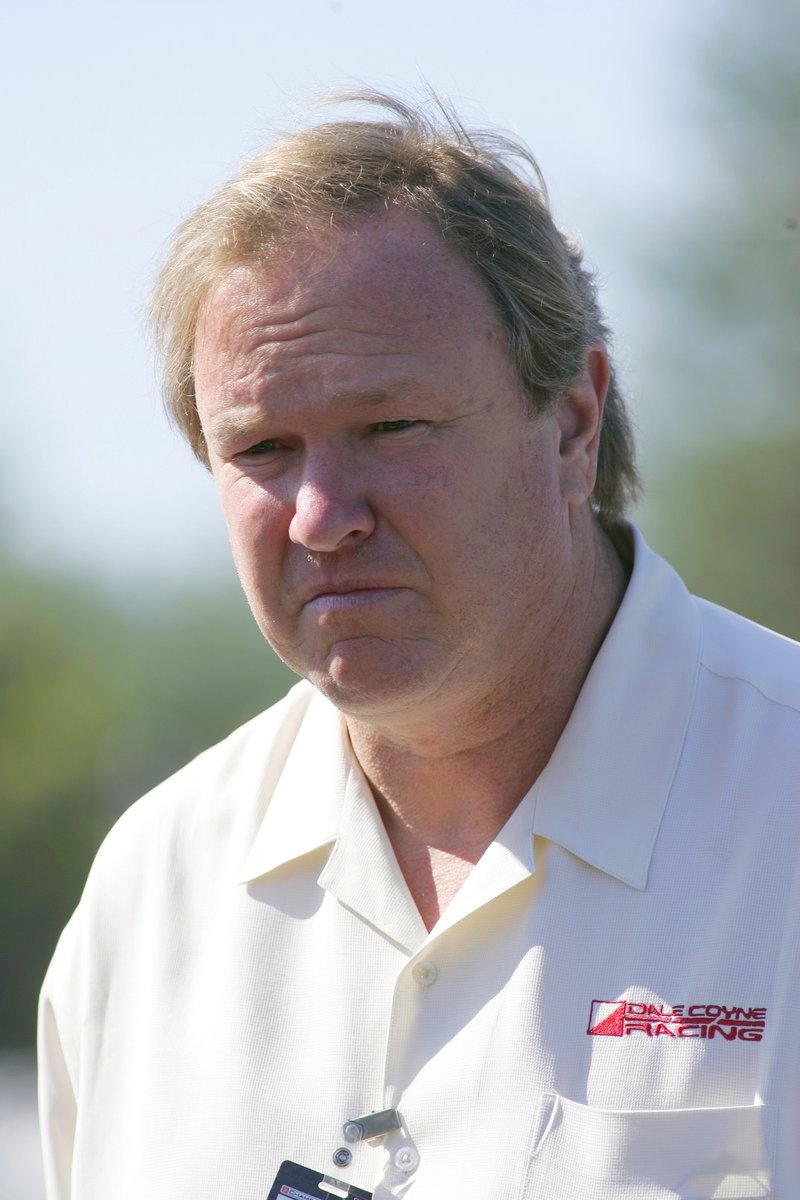 |
| Dale Coyne |
Dale Coyne (interim CART and IndyCar CEO, 1993-1994)
Background: Between 1984 and 1991, Coyne made 34 CART starts for the team that bears his name. His career best finish behind the wheel would be twelfth three times. In 1992, he stepped aside from driving to focus full-time on team ownership.
When Stokkan lost favor amongst the paddock in late 1993, Coyne, a racing lifer, was enlisted to fill in on a temporary basis. He put the finishing touches on CART’s 1994 schedule and a new television contract with ABC and ESPN. Coyne also was instrumental in establishing CART’s gold standard safety team with Terry Trammel and Steve Olvey.
Coyne would turn over the CEO title in early 1994 to Andrew Craig.
Coyne’s Legacy is? CART’s legendary safety team.
While the unassuming Coyne was not on the job long, the safety team he helped form, revolutionized the standards of emergency response within the sport.
What is Coyne doing now? While Coyne’s team has never reached the status of Ganassi, Penske, or Andretti, the IndyCar lifer continues to answer the bell year after year. This past season, DCR scored its second career victory and first on an oval with Justin Wilson’s win at Texas in June.
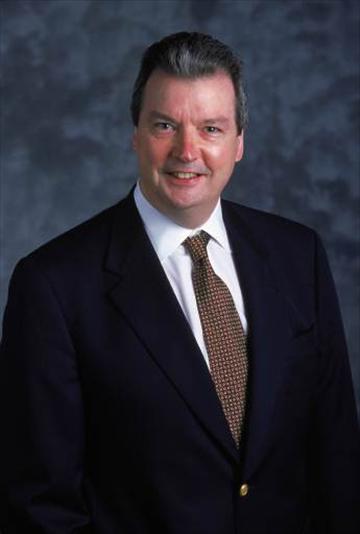 |
| Andrew Craig |
Andrew Craig (1994-2000, President and CEO of CART and IndyCar)
Background: Craig had been deputy chief executive for Swiss-based International Sports and Leisure marketing company before becoming president and CEO of CART March 31, 1994. And although he is often referred to as a racing outsider, he had worked for an advertising agency which managed accounts for Brands Hatch and British F5000.
Craig would replace Stokkan in early 1994, and immediately state his intention to mend fences with George and the Speedway. However, the selection of Craig alone, infuriated George, who wanted USAC lawyer Cary Agajanian. George resigned his non-voting seat on the CART board citing his "continuing dissatisfaction with the decision-making process dictated by the organizational structure of CART."
Sadly, Craig would never be able to mend fences with the Speedway, and in 1996, George guaranteed 25 of the 33 starting positions in the Indianapolis 500 for points leaders of his new Indy Racing League. Craig organized a rival race, the U.S. 500 at Michigan, that ended embarrassingly for CART, with a 10 car first lap pileup, that many attributed to Craig's insistence on a three wide start.
Now, Craig's tenure can be viewed in a positive light from a certain perspective. In 1998, he took CART public, and many of the series owners enjoyed the financial windfall. However, Craig was never able to cure the "Indy envy," that pervaded the CART paddock. Sadly, the IPO money earned was never invested in the series' future, despite the war with George and the IRL continuing to plague CART. Amidst declining television ratings and race attendance, Craig would be forced out in June of 2000.
Craig's legacy is? Confusing.
Most remember Craig as another aloof, racing outsider, who was hampered by the fact Tony George had started a competing series that took away CART's biggest race (Indy 500) and was competing against a company run by voodoo economics. And clearly, CART declined during his reign as the series could not find common ground with the man destined to destroy the sport.
However, don't forget that Craig was the architect behind the series' IPO, which raised $140 million. And is it fair to blame Craig for the fact that money was spent so poorly after his reign?
What is Craig doing now? Craig is currently the CEO at The Craig Company LLC, which advises cities and governments on how to win the rights to host the Olympics and other international sporting events.
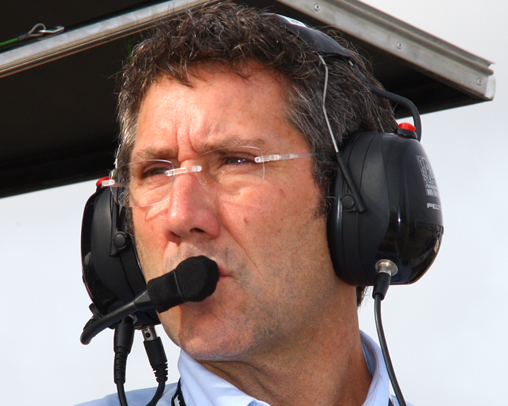 |
| Tony George |
Tony George (1996-2009 President of the Indianapolis Motor Speedway and IRL)
Background: George differs from any of the other leaders of Indy car racing discussed here in numerous ways. To start, as mentioned earlier, George had no previous resume of noteworthy accomplishment, prior to assuming a position of leadership. We know he dabbled in some junior racing formulae running Super Vees, USAC Pro-Ford and the American Racing Series, during the 1980s. However, there is no real indication of notable employment prior to 1990. He, if anything, seemed to almost appear out of thin air.
Oddly, this notion was if anything, confirmed by George himself, who once retrospectively described his 20s, as a time, in which he "just sort of existed."
Nevertheless, the grandson of Tony Hulman, Jr. and son of Elmer and Mari George became President of the Indianapolis Motor Speedway on January 8, 1990, shortly after the death of Joe Cloutier, the longtime right hand man of Hulman.
Upon taking over the reigns of the Speedway, George became disenfranchised with CART, then the dominant sanctioning group within Indy car racing. Unable to reach a truce with CART, or gain a significant foothold within the organization, George essentially, appointed himself leader, by seizing power and leveraging the Indianapolis 500 to do so.
Of course, in 1996, he started the Indy Racing League as a rival to CART. To get his new league started, George essentially leveraged the Indianapolis 500, enacting the previously mentioned 25/8 rule.
George's heavy-handedness with CART resulted in the beginning of a bitter, destructive 12-year war, which saw Indy car racing's viewership, attendance, and prominence decline significantly. George also deserves criticism for essentially assisting NASCAR's explosive growth during the late 1990s, as he joined forces with Bill France to help develop numerous new racetracks. Sadly, this like many of George's other initiatives did nothing to further the sport of Indy car racing.
Now, in fairness, 
George was significant in helping to broker unification between Champ Car and the IRL in 2008. However, in 2009, his sisters voted to curtail his spending, and he resigned his post as head of the IRL and IMS.
George’s Legacy is? Sad.
Many credit George with not only destroying the sport and entire industry around it, but squandering a family fortune to do so.
Personally, I would argue George's 25/8 rule was the single worst thing to ever happen to the Indianapolis 500, and in turn, Indy car racing. Sure, George had help from poor management at CART, and advisers with agendas, but ultimately he was the one who pulled the trigger in commencing Indy car racing’s destructive and senseless civil war.
And the effects of George's Reign of Error, go further than simply the sport. Economically, the city of Indianapolis has never recovered from George's reign. The Indianapolis 500, once a month long event in central-Indiana has essentially been reduced to a weekend extravaganza.
What is George Doing Now? George, of course, remains very much in and around IndyCar. He had been restored to the IMS board in 2010, but resigned a month ago to pursue a purchase of the series. Much to the delight of IndyCar fans, George has been unsuccessful in that endeavor.
Stay tuned for Part 2…….
